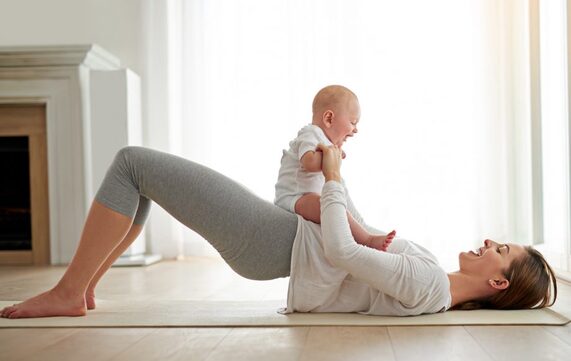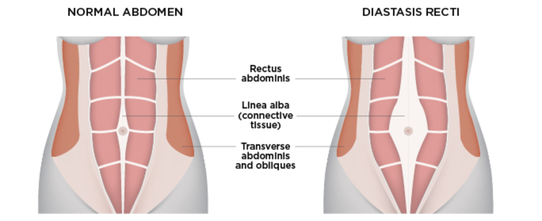|
Each and every birth is different which also means each Mother’s return to exercise and postnatal recovery will be different too. It is important to check in with your health professional before returning to exercise, ideally this would be a women’s health physio. How long should I wait? There is no one rule that fits all in this circumstance but the general guidelines will differ significantly depending on what type of birth you have. It also depends on what your exercise levels were before giving birth. Vaginal Birth: It is safe to start doing very gentle pelvic floor exercises and slow walks a few days after birth, although more vigorous based exercise should be avoided until after your 6 week check up. Once cleared to resume exercise you should not be exercising at full, pre-birth intensities until around 16 weeks postpartum. Caesarean Birth: As a Caesarean is a major operation it will take at least 6 weeks for tissues to heal. Gentle pelvic floor exercises can be done a few days after birth but gentle low impact aerobic exercise should be done 6-8 weeks postpartum. High impact exercise and heavy weights should be avoided until 3-4 months postpartum once scar tissue has fully healed. Why is exercise beneficial for new Mum’s? Whilst everyone benefits from regular exercise there are some additional benefits for new Mum’s, which include but are not limited too;
What pregnancy changes might affect my ability to exercise postpartum? The female body is amazing and goes through many changes over the course of pregnancy, birth and postpartum. During pregnancy and labour our hormone levels are at an all time high and this can affect your joints and ligaments for up to 6 months afterwards. This highlights why it is important to ease back into exercise even if you are feeling great. During your pregnancy your abdominal muscles may have separated causing Diastus Recti. This can have long term effects if not treated correctly in its early stages and will determine what types of exercises are safe to be doing. The Pelvic Floor is made up of muscles and ligaments that support the bladder, uterus and bowel. This can be weakened during labour, particularly if you had a vaginal birth. Regular pelvic floor exercise can help to strengthen the area and prevent prolapse and leaky bladder in the future. What type of exercise should I be doing?
Low impact exercise will be the best place to start postpartum. In the first few days after birth, focusing on resting and caring for your newborn baby is most important. Some gentle pelvic floor exercises can be done. Think about Squeezing and lifting the muscles around your Vagina as you are trying to hold in a wee, try holding this for 5-8 seconds and then fully relax. Other low-impact exercises that maye suitable include;
Try starting small by incorporating short bouts of exercise into your day. For example walk with the pram down to the shops, think about doing your pelvic floor exercises whilst feeding your baby, etc. Before returning to any exercise postpartum it is important to consult your health professional first and go at your own pace. Written by, Aleisha Michael Accredited Exercise Physiologist.
0 Comments
 You may have heard the word Pilates floating around the health and fitness world in recent years, but what is Pilates and why is it all the rage right now? What is Pilates? Pilates is a form of exercise focused on the entire body and was developed by a man named Joseph Pilates. It was originally used to assist in rehabilitating injured soldiers from WW1 and then was used as strength and conditioning exercise for dancers. These days it is much more widely used by many individuals for many different purposes. Traditionally Pilates focuses on low-impact movements that target flexibility, muscular strength and endurance. Each exercise should be performed with precision, balance, correct postural alignment, core activation, and controlled flowing movements that incorporate breathing to centre the mind. Pilates movements can be completed in standing on laying positions and can also incorporate equipment such as the Reformer, Pilates Magic Circle, Chi Ball, Cadillac, Ladder Barrel and many others. It is very common these days for Pilates classes to be combined with other forms of exercise such as HIIT, Boxing or Yoga. What are the benefits? So, what’s all the obsession with Pilates over other forms of exercise? There are many benefits to Pilates when compared to other exercise methods, including;
What are the 5 key Pilate’s principals?
Now that you know what all the fuss is about, why not give a Pilates class a go! By Aleisha Michael Accredited Exercise Physiologist |
AuthorSLisa Parkinson Archives
July 2024
Categories
All
|



 RSS Feed
RSS Feed